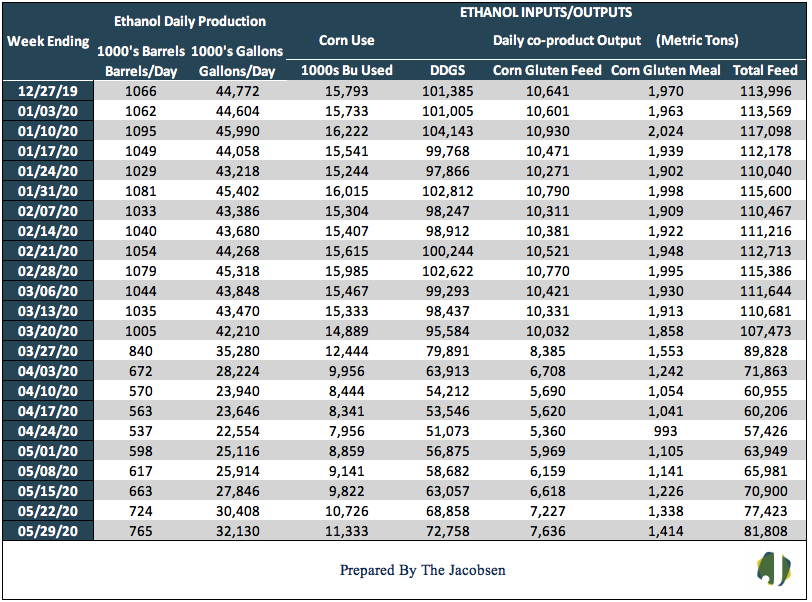11.21.2025
Sausage casings bulletin, November 21, 2025

...

Ethanol production increased 41,000 barrels per day to a 765 million-barrel-per-day average during the week ending May 29, 2020, hitting a nine-week high, according to the EIA’s Weekly Petroleum Status Report. Output increased 5.7 percent from last week but is still 27 percent below production levels at this time last year. DDGS output climbed 3,899 metric tons daily during the past week but is 26,535 MT below daily production from a year ago.
Gasoline supply increased 4.1 percent, hitting its highest level since the pandemic was announced. Gasoline supply is 20 percent below 2019 levels for the same weekly period. Ethanol stocks reached a 21-week low at 22.48 million barrels. Ethanol imports were absent again during the week. The increase in ethanol production raised corn demand by 607 thousand bushels per day. DDGS output moved with ethanol production, rising 5.7 percent for the week.
Ethanol output is averaging 879,174 b/d per week during 2020, down 5,190 barrels daily from last week and 149,365 barrels below average 2019 weekly production. The ethanol blend rate increased to 10.1 percent. Average year to date gasoline demand is 60.5 million gallons per day below 2019 average demand.
Approximately 11.3 million bushels of corn were consumed daily in the production of ethanol and, as a co-product of production, 81,525 metric tons of livestock feed was produced daily. DDGS production accounted for 72,758 metric tons, with the balance comprised of 7,495 MT of corn gluten feed and 1,273 MT of corn gluten meal.
The estimated ethanol-processing margin increased during the week. Revenue from ethanol and DDGS sales moved from $4.60 to $4.66 per bushel while the cost of corn increased four cents to $3.22 per bushel. This allowed the margin to expand two cents to $0.85 per bushel. The estimated margin is 55 percent over levels from year ago.





